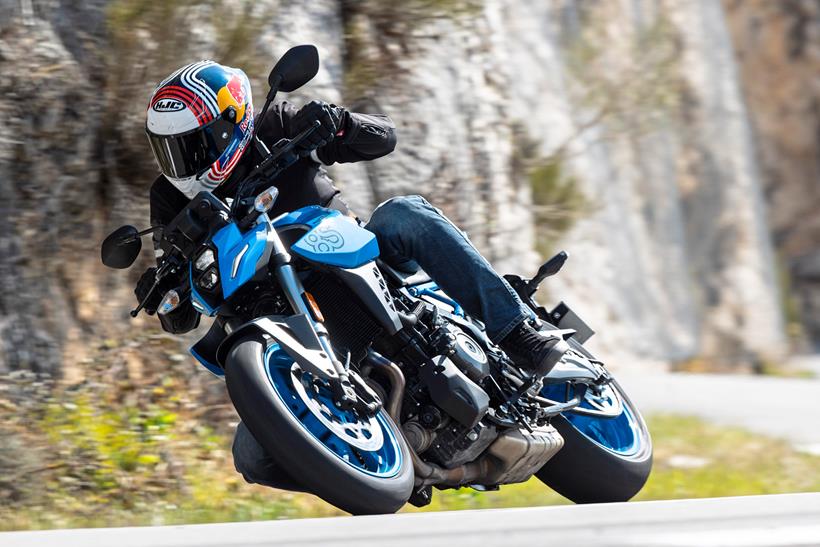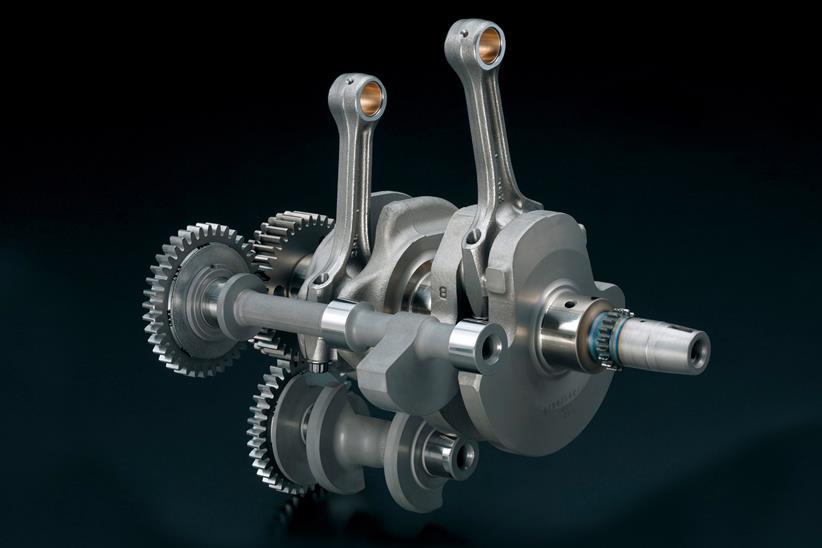Balancing act: How Suzuki’s GSX-8S puts a fresh spin on 270-degree parallel twins
Suzuki’s 776cc GSX-8S, which impressed at its recent launch, is the latest in a string of parallel twins chasing a perfect blend of cost, size, and performance.
It goes up against the Yamaha MT-07 and Honda CB750 Hornet, with all three using 270-degree twins complete with balancers to tackle vibrations – but the Suzuki adds an extra dimension.
Today, 270-degree motors are fast becoming the norm because they hit a sweet spot between the more traditional 180- and 360-degree designs. There’s a 90-degree offset between the two pistons’ crankpins and the firing interval is more even than a 180-degree twin but less regular than a 360-degree design: the crank turns 270 degrees between the first and second cylinders firing, followed by 450 degrees before the first fires again. It’s the same interval as a 90-degree V-twin, and one that riders generally prefer the feel of.
Importantly, the 90-degree offset means that when one piston stops at the top or bottom of its cylinder, the other is at its peak speed in the middle of its travel. As a result, the acceleration of one piston is matched by the deceleration of the other, thus eliminating unpleasant secondary vibration.

This design also falls between the other two when it comes to primary balance and the rocking couple (side-to-side rocking caused by the movement of the pistons).
Their primary balance is better than a 360 engine, but not as good as a 180, while the rocking couple is better than a 180-degree twin but worse than a 360-degree one.
Both of these problems are mitigated by balancer shafts on the current crop of twins, often geared to the crankshaft, turning at the same speed and with carefully calculated, offset weights to counteract the vibrations. This helps achieve the pleasant rumble of a V-twin firing interval without the nasty vibes of an unbalanced parallel twin.
Suzuki’s 270-degree twin – also found in the V-Strom 800 adventure bike – breaks with tradition, using a ‘Cross Balancer’ design with two balancer shafts rather than one. One is in the usual spot, just in front of the crankshaft, while the other sits below the crankshaft. Both are driven by the same gear in a patented layout designed to be more compact than other arrangements. It also allows for bigger balancer weights while taking up less space than a single shaft.
Elsewhere, the new 755cc 8v twin powering the Honda Hornet and Transalp or the Yamaha 689cc ‘CP2’ from the MT-07 and its siblings use a single balancer shaft with two weights on it, mounted just ahead of the crankshaft.

The system’s roots lie in Suzuki’s original ‘XE7’ turbo version of the new twin, which was shown back in 2015. The firm’s patent says a single shaft couldn’t have big enough balancer weights in “a vehicle of large engine displacement or a vehicle required to have a supercharger.”
Each balancer shaft deals with vibrations from one cylinder, with the front shaft cancelling the primary vibration of the left-hand cylinder, and the shaft underneath dealing with the right cylinder.
Traditional parallel twins
Traditionally, parallel twins had either 360-degree cranks, where both pistons rise and fall as one, or 180-degree cranks where one piston is at the top of its travel while the other is at the bottom.
The 360-degree twins have evenly spaced firing intervals, one for every full rotation of the crankshaft, but terrible ‘primary’ balance because the pistons go up and down together.
180-degree twins have perfect primary balance, because the upward movement of one piston counteracts the downward travel of the other, but an uneven firing interval with a short 180-degree gap between combustions followed by a long 540-degree wait. They also suffer from a ‘rocking couple’ as the movement of the pistons makes the engine rock.
These designs also suffer secondary balance problems as both pistons are simultaneously stationary at the top and bottom of their travel.






